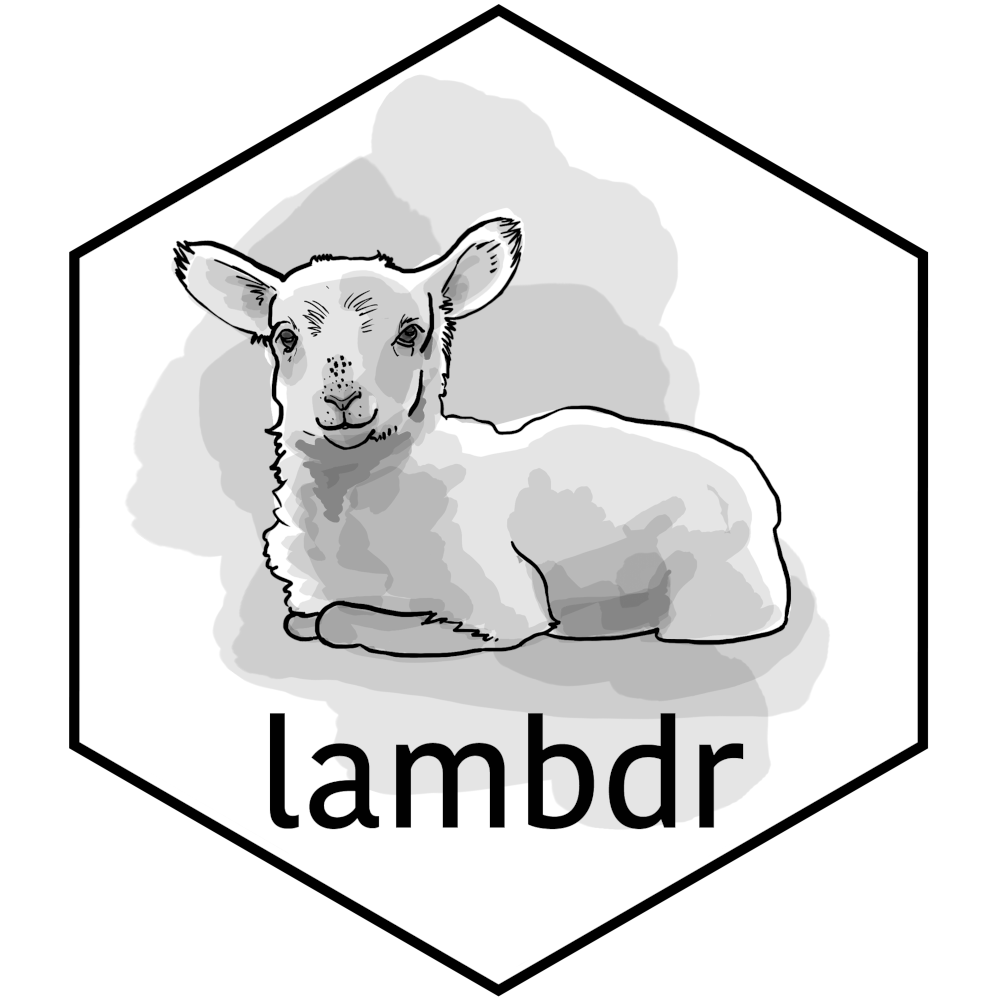
The hardware and bandwidth for this mirror is donated by dogado GmbH, the Webhosting and Full Service-Cloud Provider. Check out our Wordpress Tutorial.
If you wish to report a bug, or if you are interested in having us mirror your free-software or open-source project, please feel free to contact us at mirror[@]dogado.de.

This package provides an R runtime for the AWS Lambda serverless
compute service. It is intended to be used to create containers that
can run on AWS Lambda. lambdr provides the
necessary functionality for handling the various endpoints required for
accepting new input and sending responses.
This package is unofficial. Its creators are not affiliated with Amazon Web Services, nor is its content endorsed by Amazon Web Services. Lambda, API Gateway, EventBridge, CloudWatch, and SNS are services of Amazon Web Services.
The default behaviour is to convert the body of the received event
from JSON into arguments for the handler function using the
jsonlite package. For example, a raw event body of
{"number": 9} will be converted to
list(number = 9). The handler function will then receive
the arguments directly after unlisting, eg. number = 9.
This works for direct invocations, as well as situations where the user
wishes to implement behaviour specific to a trigger.
Some invocation types have their own logic for converting the event body into an R object. This is useful for say, using an R function in a Lambda behind an API Gateway, so that the R function does not need to deal with the HTML elements of the invocation. The below invocation types have custom logic implemented. Refer to the vignettes or the package website for more information.
Alternatively, user-defined functions can be provided for parsing
event content and serialising results. The user can also use the
identity function as a deserialiser to pass the raw event
content — as a string — to the handler function. Refer to
?lambda_config for more information.
| invocation type | implementation stage |
|---|---|
| direct | |
| API Gateway (REST) | |
| API Gateway (HTML) | |
| EventBridge | |
| SNS |
When the package is made available on CRAN it can be installed with:
install.packages("lambdr")The development version is available with:
remotes::install_github("mdneuzerling/lambdr")In a runtime.R file, source all functions needed and
then run:
lambdr::start_lambda()This runtime.R file should be executed by the Docker
image containing your Lambda code.
The lambdr::start_lambda() function relies on
environment variables configured by AWS. It will fail if run locally. In
particular, the handler as configured by the user through AWS
will determine which function handles the Lambda events. For debugging
and testing, values can be provided to the function in the absence of
environment variables. See ?lambdr::lambda_config for
details.
Consider the following runtime.R file:
parity <- function(number) {
list(parity = if (as.integer(number) %% 2 == 0) "even" else "odd")
}
lambdr::start_lambda()The parity function accepts a number
argument and returns its parity as a named list, for example:
parity(5)
# $parity
# [1] "odd"
parity(8)
# $parity
# [1] "even"This function can then be placed into a Docker image. An example is provided below, but the key components are:
public.ecr.aws/lambda/provided:al2
parent image, which provides the basic components necessary to serve a
Lambdalambdr packageruntime.R and any other necessary
filesruntime.R with
RCMD. The lambdr
package interprets the handler as the name of the function to use, in
this case, “parity”. The CMD can also be set (or overriden)
when setting up the Lambda in AWS.FROM public.ecr.aws/lambda/provided:al2
ENV R_VERSION=4.0.3
RUN yum -y install wget git tar
RUN yum -y install https://dl.fedoraproject.org/pub/epel/epel-release-latest-7.noarch.rpm \
&& wget https://cdn.rstudio.com/r/centos-7/pkgs/R-${R_VERSION}-1-1.x86_64.rpm \
&& yum -y install R-${R_VERSION}-1-1.x86_64.rpm \
&& rm R-${R_VERSION}-1-1.x86_64.rpm
ENV PATH="${PATH}:/opt/R/${R_VERSION}/bin/"
# System requirements for R packages
RUN yum -y install openssl-devel
RUN Rscript -e "install.packages(c('httr', 'jsonlite', 'logger', 'remotes'), repos = 'https://packagemanager.rstudio.com/all/__linux__/centos7/latest')"
RUN Rscript -e "remotes::install_github('mdneuzerling/lambdr')"
RUN mkdir /lambda
COPY runtime.R /lambda
RUN chmod 755 -R /lambda
RUN printf '#!/bin/sh\ncd /lambda\nRscript runtime.R' > /var/runtime/bootstrap \
&& chmod +x /var/runtime/bootstrap
CMD ["parity"]For production uses it’s recommended to replace the “al2” tag above with a specific tag for the image.
The image is built and uploaded to AWS Elastic Container Registry (ECR). First, a repository is created:
aws ecr create-repository --repository-name parity-lambda --image-scanning-configuration scanOnPush=trueThis provides a URI, the resource identifier of the created repository. The image can now be pushed:
docker tag mdneuzerling/r-on-lambda:latest {URI}/parity-lambda:latest
aws ecr get-login-password | docker login --username AWS --password-stdin {URI}
docker push {URI}/parity-lambda:latestIn either the AWS console or the command line, a Lambda can be created from this image. Call the Lambda “parity” to match the function name. Tests can be executed within the console. Alternatively the Lambda can be invoked from the CLI:
aws lambda invoke --function-name parity \
--invocation-type RequestResponse --payload '{"number": 8}' \
/tmp/response.json --cli-binary-format raw-in-base64-outThe output is now available in the generated file:
cat /tmp/response.json {"parity":"even"}Hex logo by Phizz Leeder
These binaries (installable software) and packages are in development.
They may not be fully stable and should be used with caution. We make no claims about them.
Health stats visible at Monitor.